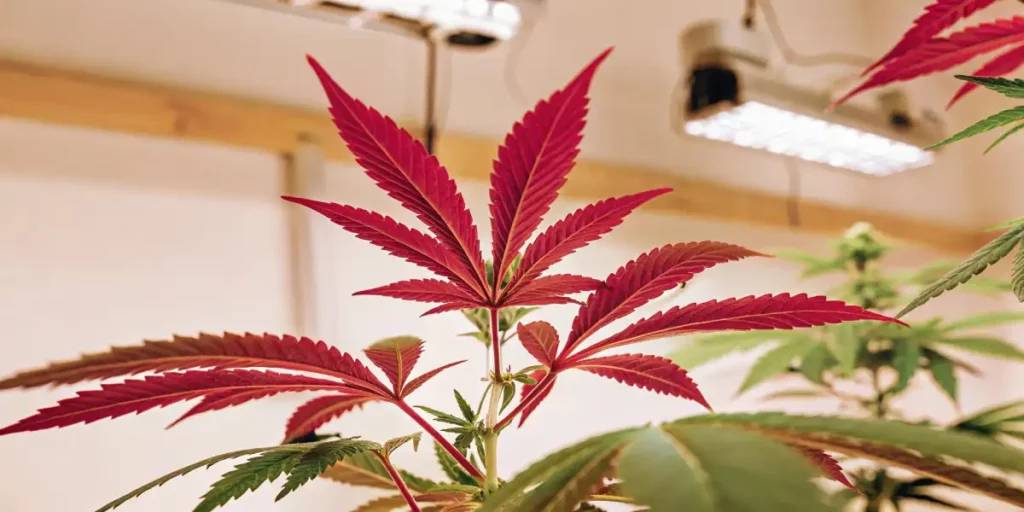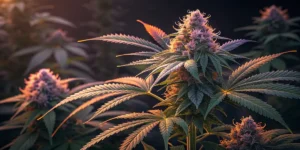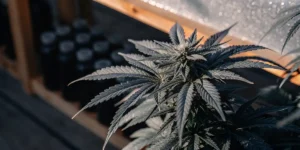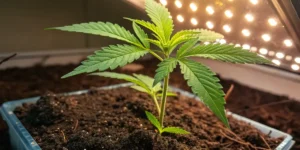Growing Apple Fritter, a popular cannabis strain known for its balanced effects and deliciously sweet flavor, requires attention to detail and a good knowing of its specific needs. This hybrid strain, which combines the genetics of Sour Apple and Animal Cookies, thrives in a controlled environment. By following this step-by-step guide, even novice growers can cultivate high-quality cannabis plants with ease.
Begin by ensuring you have the optimal grow medium. This strain can be grown in soil, hydroponics, or coco coir, but it responds particularly well to organically rich soil with good drainage. A pH level of around 6.0 to 6.5 is ideal for soil grows, whereas hydroponic systems should be adjusted to a pH of 5.5 to 6.0. It’s vital to start with high-quality seeds from a reputable source to ensure you’re growing a true representation of the variety.
The next step is to create the perfect environment. These plants prefer a temperature range between 70 to 80°F (21 to 27°C) during the day, with a slight drop at night. Humidity levels should be around 40-50% during the vegetative stage and decreased to 30-40% during flowering to prevent mold and mildew. Consistent light cycles are essential, with 18-6 (light-dark) during the vegetative stage and 12-12 during flowering, mimicking the natural progressions of the outside world.
Nutrient management is key for robust growth and bountiful harvests. Like many cannabis strains, this one thrives with a balanced nutrient mix, including nitrogen, phosphorus, and potassium. During the vegetative stage, emphasize nitrogen, while increasing phosphorus and potassium during the flowering stage for healthy blooms. Regularly flushing your plants can help prevent nutrient lockout and ensure they receive the optimal amount required.
Lastly, monitoring and maintenance throughout the growth cycle are imperative to the success of your plants. Regularly check for signs of pests or nutrient deficiencies, and prune as necessary to encourage better light penetration and air circulation. Patience during the flowering stage, which typically lasts 8-10 weeks, will be rewarded with dense, frosty buds that capture the essence of this strain’s unique aroma and flavor.
Strain Overview: Traits, Effects & Genetics
Apple Fritter is a fascinating strain that has garnered attention from both cultivators and consumers due to its balanced effects and appealing genetic lineage. Known for its sweet apple aroma laced with earthy flavors, it is a hybrid strain that marries the characteristics of an Indica with that of a Sativa, making it versatile for various recreational and medicinal uses. Its buds are dense and have a notable frostiness due to the generous coating of trichomes, which makes them visually appealing to cannabis enthusiasts.
The effects of this strain are as delightful as its name suggests. Consumers often report a euphoric onset that leads to a blissful mental state, combined with a deep relaxation that can ease tension and stress. It is this perfect balance between the cerebral stimulation attributed to its Sativa heritage and the soothing body relaxation from its Indica lineage that makes it a preferred choice for those seeking relief from chronic pain, anxiety, and insomnia. This variety’s ability to elevate mood and deliver a calming buzz makes it ideal for social gatherings or unwinding after a long day.
Genetically, this strain is a product of carefully selected parent strains, namely Sour Diesel and Animal Cookies. This crossing results in a potent cultivar that typically boasts THC levels ranging from 20% to 32%, making it suitable for experienced users. Its lineage not only contributes to its high THC content but also to its diverse terpene profile, which enhances its unique aromatic and flavor characteristics. Knowing its genetic background helps growers anticipate the plant’s needs throughout its lifecycle and optimize conditions to maximize yield and potency.
When cultivating this variety, growers must consider its medium growth difficulty. It thrives in both indoor and outdoor environments but requires careful management of humidity and temperature to prevent mold and pests. This strain’s robust genetics often lead to resilience against minor environmental fluctuations, making it relatively forgiving. The flowering period typically ranges from 8 to 10 weeks, with outdoor harvests occurring around late September to early October in suitable climates.
Optimal Environment to Grow Apple Fritter Successfully
This strain is prized not only for its sweet, apple-like aroma and potent effects, but also for its moderately challenging growth process. To cultivate it successfully, it’s imperative to create an ideal environment that caters to the plant’s specific needs. It thrives in a controlled indoor setting or a warm, Mediterranean-style climate if grown outdoors. This ensures that the plant receives the consistent warmth and light exposure it requires.
Temperature plays a crucial role in the development of this variety. It flourishes in temperatures ranging from 70 to 80 degrees Fahrenheit during the day. Consistent temperatures prevent stress and promote healthy growth. Nighttime temperatures can drop slightly to around 60-70 degrees Fahrenheit, which mimics its natural outdoor conditions while still allowing the plant to produce potent buds. Fluctuations outside of these ranges can stress the plant, potentially stunting its growth and diminishing yield.
Besides to temperature, maintaining the right humidity level is essential for optimal growth. During the vegetative stage, this strain requires a relative humidity level between 55-65%. As it transitions into the flowering stage, it is important to gradually lower the humidity to around 40-50% to prevent mold and mildew, which can be detrimental to bud development. Proper humidity control ensures that the plants can breathe without excessive moisture risking the plant’s health.
Lighting conditions are equally important, particularly for indoor growers. During the vegetative stage, this variety needs about 18 to 24 hours of light. When it transitions to the flowering stage, reduce this light exposure to 12 hours to simulate the natural transition of the seasons, which triggers the plant to start producing flowers. Utilizing full-spectrum LED lights will provide the best simulation of the sun’s rays, promoting healthy and robust growth with maximum yield potential.
Grow Room Setup for Apple Fritter Plants
Setting up an ideal grow room for your Apple Fritter plants is crucial for maximizing their unique characteristics and potent yield. Initially, it’s important to choose an adequate space that can comfortably accommodate the number of plants you intend to grow. Ensure the room is easily accessible and has enough vertical and horizontal space to support the growth of these medium to tall plants. Proper insulation is important to maintain stable temperature and humidity levels, which are key factors for successful cultivation.
Lighting is another critical component of your grow room setup. These plants thrive under full-spectrum LED grow lights, which mimic the natural sunlight they require for optimal growth. Position your lights to provide even coverage and consider adjustable fixtures to maintain the correct distance as your plants grow. A standard 12–18 inches above the canopy is generally effective, but this can be adjusted based on the plant stage and manufacturer recommendations. The lights should operate on a cycle, typically 18/6 during the vegetative stage and switching to 12/12 as you initiate flowering.
Ventilation and airflow must not be overlooked when setting up your grow room. Install a reliable exhaust fan to expel stale air and bring in fresh air. Use oscillating fans to circulate air within the room, preventing mold and mildew. This ensures a stable environment by regulating temperature, humidity, and CO₂ levels, which are essential for the healthy growth of your cannabis plants. Additionally, monitor and adjust the humidity to stay within the range of 50–70% during vegetative growth and lower it to around 40–50% during the flowering stage to prevent bud rot.
Temperature control is another significant aspect of grow room preparation. These plants prefer temperatures between 68–75°F (20–24°C) during the day and slightly cooler at night. Use digital thermometers and hygrometers to constantly monitor and maintain these conditions. If necessary, heaters or air conditioning units can help achieve these optimal conditions, ensuring the plants develop dense nugs with a sweet, earthy aroma.
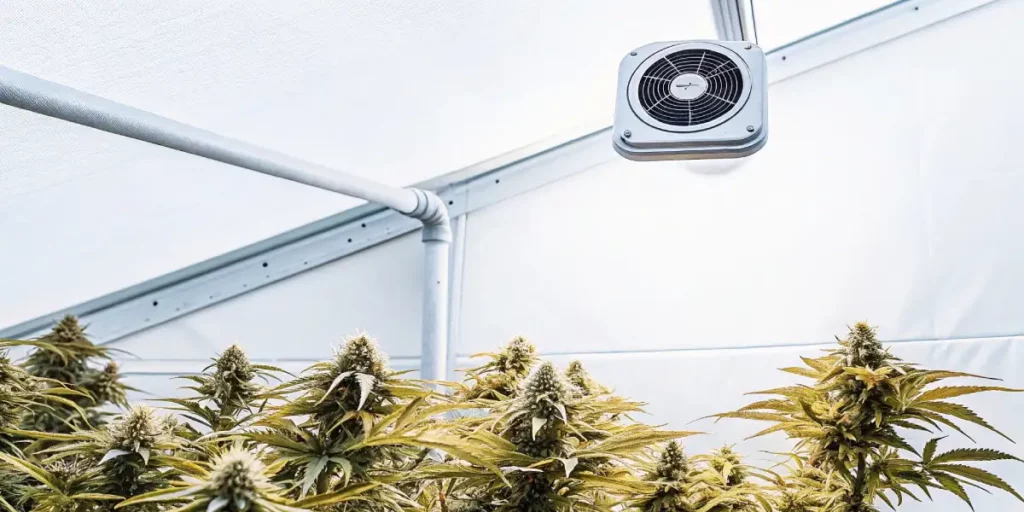
Indoor Growing Tips
This hybrid strain, known for its potent effects and delicious flavor profile, is a favorite among cannabis growers. When cultivating this variety indoors, specific considerations can enhance growth and yield. One key aspect is establishing an optimal environment that mimics the plant’s natural habitat. It thrives in a controlled climate with temperatures ranging from 68–78°F (20–26°C) during the day and slightly cooler nights. Consistent temperatures, coupled with a relative humidity of 40–50%, create ideal conditions for successful growth.
Lighting plays a critical role in the indoor cultivation of this strain. Utilizing high-quality LED grow lights can provide the full spectrum required throughout the plant’s growth stages. This variety benefits from 18–24 hours of light during its vegetative stage to promote robust development and shorter light cycles, around 12 hours, during the flowering phase. Ensuring the lights are appropriately distanced from the canopy can prevent light burn and stress, which might delay flowering.
This hybrid also requires careful attention to its nutrient intake. A balanced nutrient solution rich in nitrogen, phosphorus, and potassium is necessary during the vegetative stage. Transitioning to a bloom-specific formula with higher phosphorus and potassium content can support flowering, enhancing both the flavor and potency of the final product. It’s essential to monitor the pH level of the growing medium, keeping it between 6.0 and 6.5 to optimize nutrient uptake.
Pruning and training techniques, such as topping and LST (Low-Stress Training), can be employed to maximize yield and manage plant height indoors. These methods help light penetrate the canopy, encouraging even growth and the development of dense, resinous buds typical of high-quality hybrids. Regular monitoring and swift response to pests and diseases are crucial to maintaining plant health and ensuring a successful harvest.
Outdoor Growing Tips
Apple Fritter, a balanced hybrid cannabis strain known for its potent effects and enticing terpene profile, can thrive exceptionally well outdoors if cultivated with care. The first consideration for outdoor growth is location. Select a spot that receives ample sunlight—ideally, at least six to eight hours of direct sunlight each day. This ensures that the plants develop robustly and achieve their full potential in both yield and quality.
Soil quality is another crucial factor. Rich, well-draining soil is essential for the healthy growth of this strain. Prior to planting, enhance the local soil with organic matter such as compost or aged manure, which boosts nutrient content and improves soil structure. Regularly check the pH level; this variety favors a pH range of 6.0 to 6.5. This slightly acidic environment aids in optimal nutrient uptake, promoting vigorous plant development.
While this strain is generally resistant to pests and diseases, consistent monitoring is vital. Implement preventive measures like companion planting with pest-repellent herbs such as basil or mint. Additionally, maintaining proper plant spacing enhances airflow, reducing the risk of mold, particularly during wetter seasons. Early detection and intervention are key—inspect plants regularly for any signs of pest damage or disease.
Watering is another critical aspect of outdoor growing. Ensure that your plants are watered consistently, especially during dry periods. Ideally, water them early in the morning to allow the foliage to dry out over the day, reducing mold risks. Utilizing a drip irrigation system can facilitate efficient water delivery without causing waterlogging, which can be detrimental to root health.
How to Germinate & Propagate Apple Fritter
Apple Fritter, an enticing and potent cannabis strain, blends the flavors of sweet apples and a subtle earthy aroma, creating an appealing choice for many cannabis enthusiasts. To successfully cultivate this strain, knowing the process of germination and propagation is essential. Germination is the starting point of your plant’s life cycle, and using the right techniques ensures robust growth. The process typically begins with selecting high-quality seeds from a trusted source, which sets the foundation for healthy plant development.
The paper towel method is a popular and straightforward approach for germinating cannabis seeds. To begin, moisten two paper towels with distilled water until they are damp but not soaking. Place a few seeds between the paper towels and gently cover them, ensuring they remain moist. Then, place the paper towels in a dark, warm place with a temperature range between 21°C to 26°C (70°F – 80°F). Within a few days, you should see tiny roots emerging, indicating successful germination. Be cautious not to handle the seeds too much, as they are delicate at this stage.
Once your seeds have sprouted, it’s time to transfer them to a suitable growing medium. Starter pots with a light and airy soil mix work well, promoting healthy root growth. Plant each seed about one centimeter deep, and ensure the soil remains consistently moist, but not waterlogged. Adequate lighting, either natural or artificial, is imperative at this stage to encourage strong seedling development. As your seedlings mature, transition them gradually to a larger growing area where they can continue to thrive.
Propagation of this variety can also be achieved through cloning, which involves taking cuttings from a mature, healthy plant. Select a mother plant exhibiting the desired traits, and snip a cutting using sterilized scissors or a sharp razor. The cutting should be around 10–15 centimeters long, ideally taken from a lower branch. Dip the cutting’s end into a rooting hormone (optional) to stimulate root development before embedding it into a growth medium like rock wool or pre-moistened soil.
Keep the new clones in a humid environment using a humidity dome or a similar method, and maintain a consistent temperature between 20°C to 24°C (68°F – 75°F). After a few weeks, roots should establish, signaling the readiness of the clones to be transplanted into larger containers. This propagation method ensures uniformity in your crop and can significantly expedite the cultivation timeline of the Apple Fritter strain. By mastering germination and propagation, cultivators can relish in the delightfully balanced high and aromatic flavors of this distinctive cannabis variety.
Vegetative Stage: Nurturing Your Apple Fritter Plants
The vegetative stage is a crucial period in the growth cycle of Apple Fritter cannabis plants, setting the foundation for a robust and healthy harvest. During this phase, focusing on optimal growth conditions is essential as the plants concentrate on developing leaves, stems, and roots. Providing the right balance of light, nutrients, and water, while maintaining suitable environmental conditions, will ensure your plants flourish. Consider using a consistent 18–24 hours of light per day to encourage rapid growth and strong stem development.
Managing the nutrient intake is another critical aspect of the vegetative stage. These plants require higher levels of nitrogen during this phase to support their rapid growth. Use a balanced nutrient solution tailored for the vegetative stage, incorporating macronutrients such as nitrogen, phosphorus, and potassium, as well as essential micronutrients. Monitor the plants closely for any signs of nutrient deficiencies or toxicities, adjusting the feed schedule as needed to maintain healthy, vibrant foliage.
Providing the correct environmental conditions is also pivotal to nurturing plants during the vegetative stage. Maintain a temperature range of 20–28°C (68–82°F) with relative humidity levels between 50–70%. Proper ventilation is necessary to ensure air circulation, preventing mold and pest issues. Regularly check for pests and diseases, employing organic pest control measures if needed. Ensuring the grow area is well-organized and clean will also help in minimizing potential challenges in the vegetative stage.
Training techniques can be particularly beneficial during this phase. Low-stress training (LST) or topping can enhance light penetration, encouraging growth in bushier shapes that maximize yield potential. Monitor the growth pattern closely, adapting your training techniques to suit the plant’s specific needs. With proper care, your plants will enter the flowering stage healthy and full of potential. Attention to detail during the vegetative stage sets the stage for a bountiful harvest and a high-quality end product.
Flowering Apple Fritter: What to Expect
The flowering phase of the Apple Fritter cannabis strain is a crucial period that determines the final yield and quality of the crop. Typically, this phase lasts about 8 to 10 weeks. Growers should anticipate a significant change in the plant’s appearance as it transitions from its vegetative state. One of the first things to notice is the development of dense buds covered in a thick layer of resin, which hints at the impressive potency this strain is known for. As the flowering stage progresses, monitoring humidity levels is essential to prevent mold and bud rot, ensuring a healthy harvest.
During the flowering period, these plants will emit a pungent, sweet aroma that is reminiscent of freshly baked pastries and apples, a signature characteristic of this variety. This aromatic profile becomes noticeably stronger as the weeks go by, so adequate ventilation is important to manage the scent if discretion is a concern. Providing your plants with the right nutrients is vital during this time; a balanced mix of phosphorus and potassium will support bud development and resin production. Growers should consistently check the pH levels to make sure nutrients are properly absorbed, avoiding deficiencies that could impact the plant’s growth.
As the flowering cycle nears its end, one can expect the pistils on the plants to change color, usually turning from white to a dark amber. This change is an indicator that the plants are nearing maturity and ready for harvest. This period also presents an opportunity to flush the plants with plain water to remove any residual nutrients, enhancing the flavor profile of the final product. Patience is key, as harvesting too early can diminish the terpene profile and cannabinoid potency, while waiting a little longer can elevate these aspects, making this strain a memorable and rewarding variety to cultivate.
Fertilizers & Nutrient Schedule
This potent and flavorful hybrid strain is cherished for its unique balance of relaxing and energizing effects. A successful yield depends heavily on a well-managed feeding schedule. The first step in this process is knowing the basic needs of your plants. Like most cannabis strains, it requires a standard mix of nitrogen (N), phosphorus (P), and potassium (K), commonly referred to as NPK ratios. These elements form the cornerstone of your fertilization plan, providing essential nutrients that the plants need at various stages of growth.
During the vegetative stage, which lasts approximately four to six weeks, this strain requires a higher concentration of nitrogen to support vigorous leaf and stem development. Opt for a fertilizer with a higher N value in the NPK ratio, such as 4-1-2 or 3-1-1. This nitrogen-rich diet will promote lush, green foliage and robust growth. Additionally, micronutrients like calcium, magnesium, and iron are vital during this stage. Supplement your feeding schedule with organic compost teas or commercial nutrient solutions that contain these micronutrients to ensure your plants are not deficient.
As the plants transition to the flowering stage, their requirements shift substantially. At this point, phosphorus and potassium become more critical for successful flower production. Consider adjusting the NPK ratio to 1-4-5 or 0-3-5 to promote bud development and enhance terpene profile, ensuring that the strain’s signature flavors and aromas fully express themselves. Be sure to gradually decrease nitrogen levels to avoid vegetative growth during flowering, which could detract from bud size and potency. Regular monitoring and adjusting based on plant response, environmental conditions, and cultivar-specific needs will ensure your crop thrives.
Scheduling your feeds is as crucial as the nutrients themselves. Once every week or ten days is usually sufficient, allowing the soil to dry somewhat between feedings to prevent nutrient lockout or overwatering. Each watering session should follow with pH-balanced water to help with nutrient absorption and root health. Consider employing a flush—watering with plain water—to cleanse the root system at least two weeks before harvest to ensure smooth flavors and minimize nutrient residue in the final product. By meticulously managing the nutrient schedule, growers can optimize the health and yield of their plants, achieving the full potential of this exceptional hybrid.
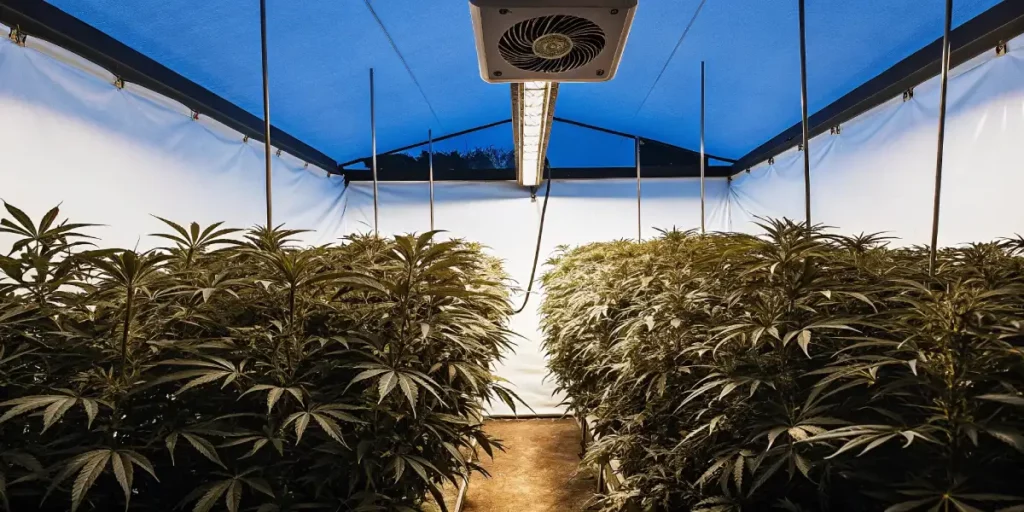
Pest and Disease Prevention for Healthy Cannabis Plants
Growing cannabis strains such as Apple Fritter require careful attention to pest and disease prevention to ensure healthy and robust plants. This strain, known for its delectable sweetness and high potency, demands a pristine growing environment. One of the most effective strategies is to start with clean and sterilized equipment and grow areas. This includes tools, pots, and even the soil medium, which should be inspected for contaminants and pathogens. Regular cleaning of your grow space helps minimize pest and disease pressure, which can otherwise lead to significant plant stress and yield loss.
Monitoring and maintaining environmental conditions play a crucial role in preventing pests and diseases. For optimal growth, cannabis requires specific temperature and humidity ranges. Keeping temperatures between 70-85°F and humidity levels between 40-60% is beneficial. High humidity can promote mold and mildew, common issues in cannabis cultivation. Growers should invest in a hygrometer and thermometer to regularly check these metrics. Additionally, ensuring proper air circulation within the growing area reduces the likelihood of mold development, as stagnant air is a breeding ground for such issues.
Implementing preventive pest control measures is vital in protecting your plants. Many growers opt for organic pest control methods to minimize chemical exposure. Introducing beneficial insects like ladybugs and predatory mites can help manage harmful pest populations such as aphids and spider mites. Furthermore, foliar sprays made from natural ingredients such as neem oil or insecticidal soap provide additional defense layers. These solutions typically have minimal toxic effects on the environment and maintain the integrity of the final product.
Routine inspections are essential to catch early signs of pest or disease infestations. Growers should regularly check the undersides of leaves and the overall plant structure for any unusual spots, discolorations, or webbings. Early detection allows immediate intervention, reducing the chance of widespread damage. Removing affected leaves and applying targeted treatments can stop infestation in its tracks, ensuring the plants remain healthy throughout their growth cycle. By combining these strategies, cultivators can significantly reduce the risk of pests and diseases, securing a flourishing harvest of high-quality cannabis.
Harvesting & Drying Apple Fritter the Right Way
The delicate process of harvesting and drying this beloved cannabis strain, known for its powerful effects and sweet, pastry-like aroma, is pivotal for preserving its unique qualities. The right time to harvest can significantly impact the potency and flavor profile of your buds. Generally, this variety is ready for harvest in about 8–9 weeks of flowering. Observe the trichomes under a magnifying glass; when most shift from a clear to a milky white, with a hint of amber, it signals optimal ripeness ensuring maximum THC content.
When you’ve determined it’s time to harvest, proceed with care. Start by cutting the branches from the stalks, aiming to keep handling to a minimum to avoid damaging the buds or altering the delicate trichomes. It’s advisable to harvest in a cool, dark environment to prevent degradation from exposure to heat or light. Remember that patience and gentleness are key; rough handling can knock off trichomes and decrease the overall quality of your crop.
Drying cannabis properly is essential for preserving its flavor, aroma, and cannabinoid profile. Once you’ve harvested, hang the branches upside down in a well-ventilated room with a controlled environment. Aim for a temperature range of 60–70°F (15–21°C) with a humidity level of 50–60%. This slow drying process usually takes 7–12 days and is crucial for preventing mold while enhancing the smoothness of the smoke. Use a hygrometer to monitor humidity levels and ensure a consistent environment.
After the drying phase, initiating a curing process further enhances the quality of your buds. Place the dried flowers in airtight glass jars, opening them daily for about 15 minutes over a period of 2–3 weeks to allow moisture to escape. This gradual process allows the cannabinoids and terpenes to mature, enhancing both the flavor and effects. By meticulously following these harvesting and drying techniques, growers can ensure their cannabis retains its enticing aroma, powerful effects, and exalted status among enthusiasts.
Strain Type: Indica, Sativa or Hybrid?
Apple Fritter is a prominent strain in the cannabis community, renowned for its balanced properties and exceptional qualities. Classified as a hybrid, this strain is a delightful blend of both Indica and Sativa genetics. This balance makes it an ideal choice for those seeking the best of both worlds: the calming, relaxing properties of an Indica with the uplifting and euphoric effects of a Sativa. Its hybrid nature allows for versatility in its effects, catering to a wide array of user preferences.
This variety’s lineage hails from two well-known parent strains: Sour Apple and Animal Cookies. Sour Apple contributes a vibrant, energizing quality, while Animal Cookies provides a calming, soothing aspect. As a result, this hybrid is often appreciated for its ability to offer both mental stimulation and physical relaxation, making it suitable for various uses. Whether consumers are looking to unwind after a long day or seeking inspiration for creative projects, its hybrid characteristics can make all the difference.
The hybrid nature of this strain also makes it popular among both medical and recreational users. Medically, it is often chosen for its potential to alleviate stress, depression, and chronic pain due to its balanced effects on both mind and body. Recreationally, its qualities can create a pleasant, enjoyable experience that enhances mood and fosters social interactions. Flexible and multifaceted, its hybrid makeup sets it apart, ensuring it remains a staple for various purposes within the cannabis community.
Overall, this hybrid classification underscores its unique and balanced contributions to the cannabis experience. Its Indica and Sativa features are harmoniously combined to create a nuanced, well-rounded strain that is highly sought after by enthusiasts and cultivators alike. If you’re seeking a strain that encapsulates the finest aspects of both cannabis types, this variety is unquestionably a prime candidate.
Why Grow Apple Fritter? Key Benefits for Cultivators
Apple Fritter is a cannabis strain that has quickly gained popularity among cultivators due to its exceptional blend of potency and flavor. Known for its high THC content, often reaching up to 28%, it appeals to both recreational and medicinal users. Cultivators appreciate the strain’s balanced hybrid nature, which combines the energizing effects of a sativa with the relaxing properties of an indica, making it versatile for various uses. This balance also makes it a desirable choice for growers aiming to meet diverse consumer needs, potentially maximizing their market reach.
Beyond its impressive cannabinoid profile, this strain is also favored for its unique terpene composition. It is celebrated for its rich aroma and flavor reminiscent of a sweet pastry, combining notes of sweet apple, vanilla, and subtle earthy undertones. This makes it an enticing option for consumers seeking an aromatic and flavorful experience, providing cultivators with an attractive selling point. Additionally, a distinctive and well-loved flavor profile can play a significant role in brand differentiation in competitive markets, drawing in repeat customers.
Cultivators will also find the growth characteristics of this variety advantageous. Known for its resilience, these plants can thrive in various growing conditions, making them suitable for both indoor and outdoor settings. The strain is not overly demanding in terms of care, often exhibiting resistance to common pests and diseases. This robustness can reduce the need for extensive interventions, lowering cultivation costs and effort while ensuring a healthy crop. For those looking to achieve a high yield with less risk, this cultivar presents an appealing option.
Furthermore, the visual appeal of this strain cannot be underestimated. It typically produces dense, colorful buds with bright orange pistils and a generous dusting of trichomes. This visually striking appearance not only boosts its marketability but also enhances the satisfaction of growers who take pride in producing aesthetically pleasing cannabis. The combination of high potency, unique flavor, growth resilience, and visual appeal makes this variety an ideal choice for both novice and experienced cultivators seeking a profitable and rewarding growing experience.
Potential Challenges When Growing Apple Fritter
Apple Fritter is a popular cannabis strain known for its unique flavor and potent effects. However, growing this strain successfully can present several challenges to cultivators. One of the primary difficulties lies in its specific environmental requirements. These plants thrive in a controlled indoor setting where the temperature and humidity levels can be meticulously managed. This variety generally prefers a temperature range of 70-80°F during the day and slightly cooler conditions at night. Maintaining stable environmental conditions is crucial, as fluctuations can stress the plants and stunt their growth.
Another challenge associated with cultivating this strain is its susceptibility to pests and diseases. Like many cannabis varieties, it is vulnerable to common cannabis pests such as spider mites, aphids, and whiteflies, which can damage the foliage and reduce yield if not kept in check. Additionally, it is prone to mold and mildew, particularly during the flowering stage when humidity levels are not properly controlled. Regular monitoring and the use of preventive measures, such as organic pesticides and proper air circulation, are essential to keeping these issues at bay.
Nutrient management is also a critical factor in the successful cultivation of this plant. It requires a balanced nutrient regimen that supports its growth stages without causing nutrient burn or deficiencies. Over-fertilization can lead to a nutrient lockout, where the plant cannot absorb essential nutrients, resulting in various growth problems. It’s imperative for growers to pay attention to the signs of nutrient imbalances and adjust their feeding schedules accordingly to ensure healthy, vigorous plants.
Space management is another consideration when growing this tall and bushy cultivar. Growers must implement training techniques such as topping, pruning, and trellising to manage the plant’s height and structure, ensuring adequate light penetration and air circulation through the canopy. This can be labor-intensive and requires a good knowing of plant training methods to optimize growth and yield.
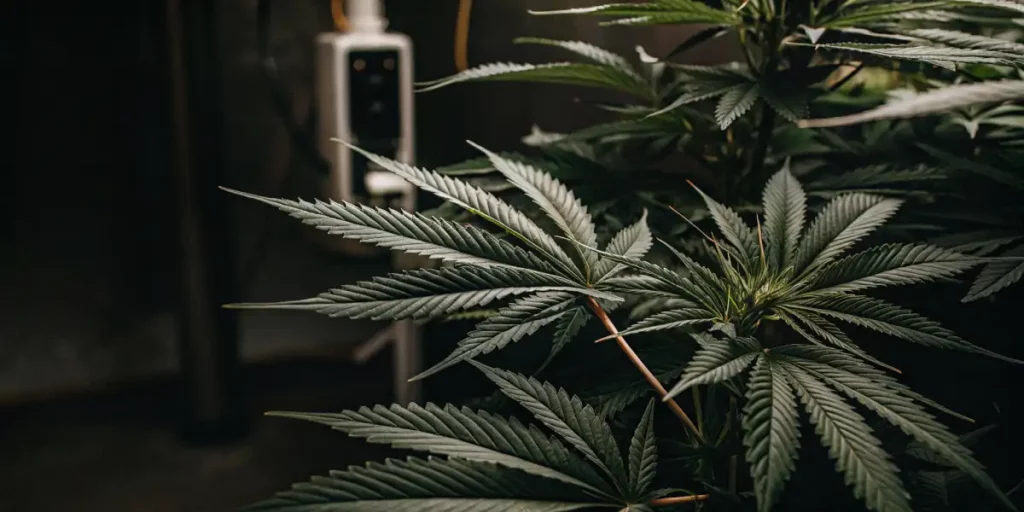
Is Apple Fritter Worth Buying? Here’s What You Need to Know
Apple Fritter is a popular hybrid strain that has garnered attention in the cannabis community for its unique qualities and effects. Known for its balanced high, it stands out with a sweet, fruity flavor profile that mirrors the taste of a freshly baked apple pastry. The strain’s genetics can be traced back to Sour Apple and Animal Cookies, which contribute to its rich aroma and potent effects. Its compelling mix of qualities makes it a strong contender for those looking to explore or enrich their cannabis collection.
One of the primary reasons enthusiasts consider this strain is its remarkable THC content, which typically clocks in at around 25% or more. This potent level of THC makes it especially appealing to seasoned users who seek significant psychoactive effects. The high offered is characterized by an uplifting cerebral experience coupled with a deep state of relaxation, making it suitable for both recreational and medicinal users. Many consumers report its efficacy in alleviating stress, anxiety, and pain, endorsing it as a multipurpose option.
Despite its advantages, purchasing this variety should also come with consideration of its potential downsides. Its high THC levels may not be ideal for beginners, who could experience overwhelming effects if not consumed mindfully. Additionally, the strain often comes with a premium price tag due to its popularity and potency. This aspect can affect accessibility for some consumers, especially those who use cannabis frequently. Therefore, potential buyers should assess their tolerance and budget constraints before investing in this option.
Ultimately, whether this strain is worth buying depends on individual preferences and needs. Its distinct flavor, high THC content, and duality of effects present it as an appealing choice for those who are well-versed in cannabis consumption. Beginners, however, should approach with caution and perhaps start with a more moderately concentrated strain. Seasoned users looking for a complex and enjoyable experience may find it to be a worthwhile addition to their cannabis rotation.
FAQs
What is the best environment for growing Apple Fritter cannabis?
The best environment for those learning how to grow Apple Fritter is a controlled indoor setup or a warm, Mediterranean-like outdoor climate. The strain thrives in temperatures between 70–80°F (21–27°C) with moderate humidity. Stable conditions help maximize bud density, potency, and terpene production while minimizing the risk of mold or pests.
How are apple fritters different from donuts?
While both apple fritters and donuts are fried pastries, they have distinct differences. Donuts are generally ring-shaped and made from a yeast or cake dough, offering a uniform texture. In contrast, apple fritters have an irregular, freeform shape due to the diced apples and batter mixture. Fritters also incorporate fruit and spices directly into the dough, giving them a chunkier texture and richer flavor. Additionally, the sweetness in fritters usually comes from their glaze or sugar coating rather than being integrated into the dough itself.
How long does it take to grow Apple Fritter from seed to harvest?
When following a proper how to grow Apple Fritter guide, the full cycle usually takes around 4–5 months. The vegetative stage lasts 4–6 weeks, followed by a flowering period of 8–10 weeks. Outdoor growers can expect to harvest by late September to early October, depending on climate and growing conditions.
What nutrients are essential when growing Apple Fritter?
Anyone researching how to grow Apple Fritter should focus on a balanced NPK nutrient ratio. During the vegetative stage, emphasize nitrogen (N) to promote lush growth. In the flowering stage, increase phosphorus (P) and potassium (K) to enhance bud development and flavor. Maintaining a pH of 6.0–6.5 in soil ensures optimal nutrient absorption.
Can beginners successfully grow Apple Fritter cannabis?
Yes, beginners can succeed if they follow a reliable how to grow Apple Fritter guide. While this strain has medium difficulty, it’s forgiving when provided with proper lighting, airflow, and nutrients. Starting with high-quality seeds, stable temperatures, and careful humidity management will help new growers achieve potent and flavorful yields.
How do I maximize yield when growing Apple Fritter indoors?
To maximize indoor yields while applying how to grow Apple Fritter techniques, maintain consistent temperature and humidity, use full-spectrum LED lighting, and apply training methods like topping or Low-Stress Training (LST). Proper pruning, nutrient balance, and good airflow can significantly increase bud size, resin production, and total yield.

